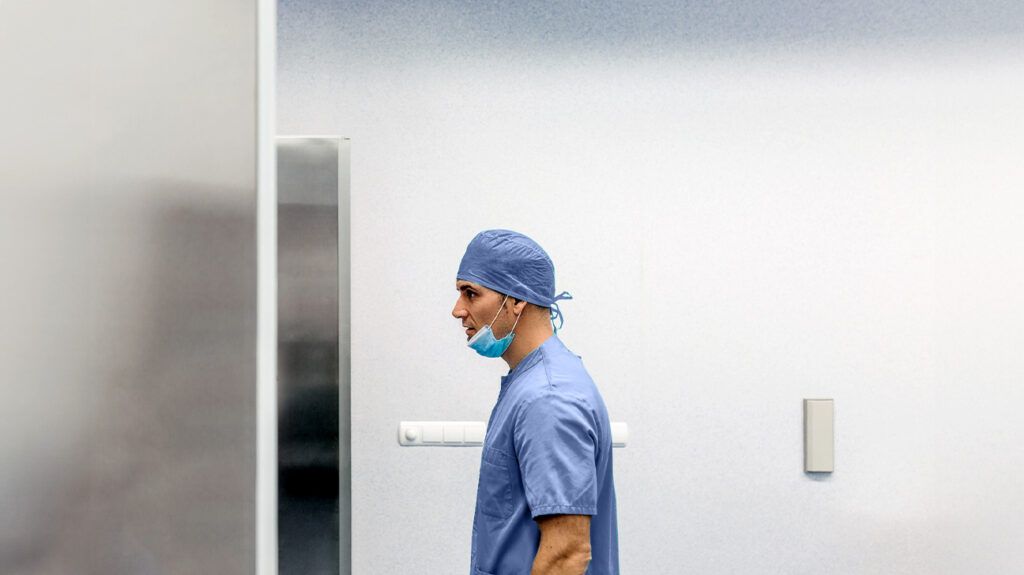Pterional craniotomy is a surgery that involves removing part of the skull to access the skull base. Doctors widely use the procedure for managing certain lesions, tumors, and aneurysms.
Pterional craniotomy dates back to the
A pterional craniotomy is a serious operation that involves a hospital stay and potential risks. A person’s recovery and outlook will depend on multiple factors, including the underlying condition that the surgery addresses.
This article will explain what pterional craniotomy is and describe the general procedure, risks, recovery, and outlook.

A pterional craniotomy is a routine surgery that provides access to the brain and skull base by removing a part of the skull in the pterional area. The pterional region is where the frontal, temporal, parietal, and sphenoid bones meet on the side of the head.
The operation involves an incision just behind the hairline.
Healthcare professionals commonly use this approach to remove certain tumors or lesions and close off brain aneurysms. Sometimes, a surgeon may combine a pterional craniotomy with another approach.
Surgeons typically try to remove as little bone as possible on the basis of the person’s needs.
Learn more about craniotomy.
Leading up to a craniotomy, a person may have to stop taking certain medications or supplements. A doctor will provide instructions on when to stop eating and drinking before surgery and how best to prepare for anesthetic.
Before the procedure, the person should plan for a hospital stay and arrange transportation home.
A healthcare professional will administer an anesthetic just before surgery. Generally, a surgeon will make an incision, drill small holes, and remove the piece of bone — known as a bone flap.
After opening a connective tissue — the dura — the surgeon will continue with the surgical plan. The procedure typically concludes by closing the dura, replacing the bone, and stitching or stapling the skin. A surgeon may temporarily put a drain under the skin or wait to replace the bone at a later time if there is swelling.
People should expect a hospital stay after the procedure. A healthcare team may provide medications to relieve pain or nausea. The person will also receive instructions on when it is okay to walk or try other movements.
Learn more about what to expect with brain surgery.
Recovery will depend on the following:
- the underlying condition
- whether there are side effects
- an individual’s needs
Right after the procedure, the person may stay in the hospital for around a week or longer.
After returning home, there will be multiple follow-ups with a healthcare team to monitor progress and check for any problems. The person may require supervision in the days following the procedure. The healthcare team will likely prescribe medication to help with any pain or prevent side effects.
With a surgeon’s approval, people can gradually ease into more movement and exercise as their recovery progresses. Assistive devices or physical therapy may be necessary.
The recovery time for a craniotomy can vary but may take 6–12 weeks or longer. People should always follow a surgeon’s prescribed recovery plan.
Learn more about waking up after brain aneurysm removal.
Some difficulties that can occur following craniotomy include:
- headache
- seizures
- electrolyte abnormalities
- infection
- blood clots
- bleeding or swelling in the brain
- air or pressure in the cranial cavity
- cerebrospinal fluid leak
- excess fluid in the brain
- injury or damage to brain tissue and structures
Severe side effects can be life threatening.
Other risks from pterional craniotomy include:
- pain or problems with chewing
- scarring
- injury to nerves
- flattening or hollowing on part of the skull
The outlook for a pterional craniotomy depends on multiple factors, including what the surgery is for.
For craniotomies in general, some researchers have reported an incidence rate of
Pterional craniotomies can treat various conditions, so long-term outlooks tend to vary. For example, a study from 2017 found a 36.5% recurrence rate for a certain type of tumor after its removal through the pterional approach.
Meanwhile, a
Pterional craniotomy is a surgery that removes part of the skull to provide access to the front and middle of the skull base. Doctors use it for managing certain conditions such as aneurysms, lesions, and tumors.
A healthcare team will provide advice on how to prepare, what to expect, and any postsurgical instructions a person should adhere to. Preparation may include stopping certain medications for a period. They should expect a short hospital stay.
Risks of the pterional approach include nerve injury, problems with chewing muscles, scarring, and skull flattening, along with other possible craniotomy side effects. Some of these can be serious and fatal.
Recovery times vary and can take 6–12 weeks or longer. The outlook for this procedure depends on what the surgery was for, along with other factors.
